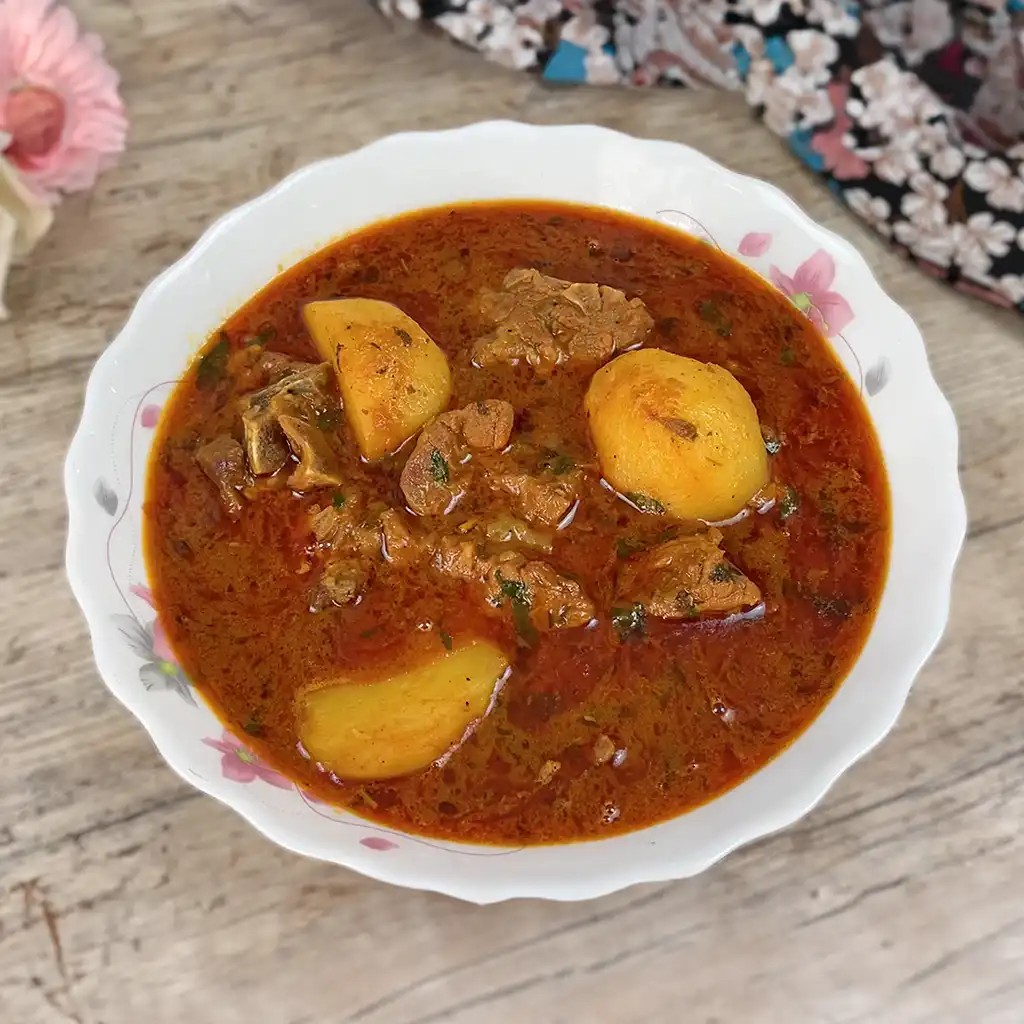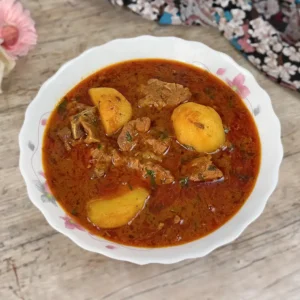
Cooking up a storm in the kitchen is always an adventure, especially when it involves crafting a dish as flavorful as Aloo Gosht.
Originating from the heart of South Asian cuisine, this classic recipe marries tender lamb with hearty potatoes, creating a dish that’s both comforting and soul-satisfying.
While the name translates to “potato meat,” don’t let its simplicity fool you – Aloo Gosht boasts a complex blend of spices that dance harmoniously on your taste buds.
Preparing Aloo Gosht may seem daunting to beginners, but fear not! With a bit of patience and a whole lot of love, you’ll soon find yourself mastering this culinary delight.
From the aromatic fragrance of cloves and cinnamon to the rich flavors of ginger and garlic, each ingredient plays a crucial role in elevating the dish to new heights.
Expert Tip: Allow the dish to simmer gently on low heat to allow the flavors to develop fully.
Lamb: Tender and succulent, lamb forms the protein base of this dish, providing richness and depth of flavor.
Potatoes (Aloo): These humble spuds add heartiness and texture to the dish, soaking up the delicious flavors of the spices.
Oil: Used for sautéing the aromatics and imparting a luscious mouthfeel to the dish.
Spices: A medley of cloves, black cardamom, cinnamon, bay leaf, garlic paste, ginger paste, salt, chili powder, Kashmiri chili, turmeric powder, black pepper, coriander powder, and cumin powder infuse Aloo Gosht with its signature warmth and complexity.
Onions and Tomatoes: These vegetables form the flavorful base of the curry, providing sweetness and tanginess to balance the spices.
Dried Fenugreek Leaves (Methi): Adding a subtle bitterness and nuttiness, dried fenugreek leaves complement the other flavors in the dish.
Coriander: Fresh coriander leaves add a vibrant pop of color and a hint of citrusy freshness to the finished dish.
Expert Tip: Toasting the whole spices before adding the other ingredients enhances their aroma and flavor.
Expert Tip: For tender and succulent meat, choose cuts of lamb with some marbling and fat.
Yes, you can substitute lamb with beef or goat meat if preferred. Adjust the cooking time accordingly to ensure the meat is cooked through.
Absolutely! In fact, Aloo Gosht tastes even better the next day as the flavors have had time to meld together. Simply reheat gently on the stove or in the microwave before serving.
Yes, Aloo Gosht freezes well. Transfer cooled leftovers to airtight containers and store in the freezer for up to three months. Thaw overnight in the refrigerator before reheating.
The level of spiciness can be adjusted according to personal preference. Feel free to adjust the amount of chili powder and Kashmiri chili to suit your taste.
While potatoes are a traditional ingredient in Aloo Gosht, you can omit them if desired. However, keep in mind that they add texture and heartiness to the dish.
Here are some more recipes for you to enjoy! If you my recipes don’t forget to rate and leave a comment.
If you have any recipe suggestions, please do not hesitate to ask me. A great way to stay in contact with me is through Instagram, Facebook, Twitter and YouTube. Don’t forget to tag me @CookwithNabeela in your recipe photos.

Subscribe now to receive my latest recipes directly in your inbox. Stay up-to-date and never miss out!

I love to cook! I want to share with you my favourite, delicious family-friendly recipes. I want to inspire you to create fantastic food for your family every day.
Latest comments (4)
just out of curisoty is this cooked on medium heat throughout the whole process
Thanks for your question. Yes, I recommend cooking it on medium heat throughout the whole process for even cooking and to prevent burning. Let me know how it turns out if you try the recipe!
My all time favourite curry
I cooked this for our monthly family gathering last night and was not disappointed
That’s wonderful to hear! 😊 I’m so glad you enjoyed the aloo gosht. It’s always a great feeling when a dish turns out just right for a special occasion. 😀